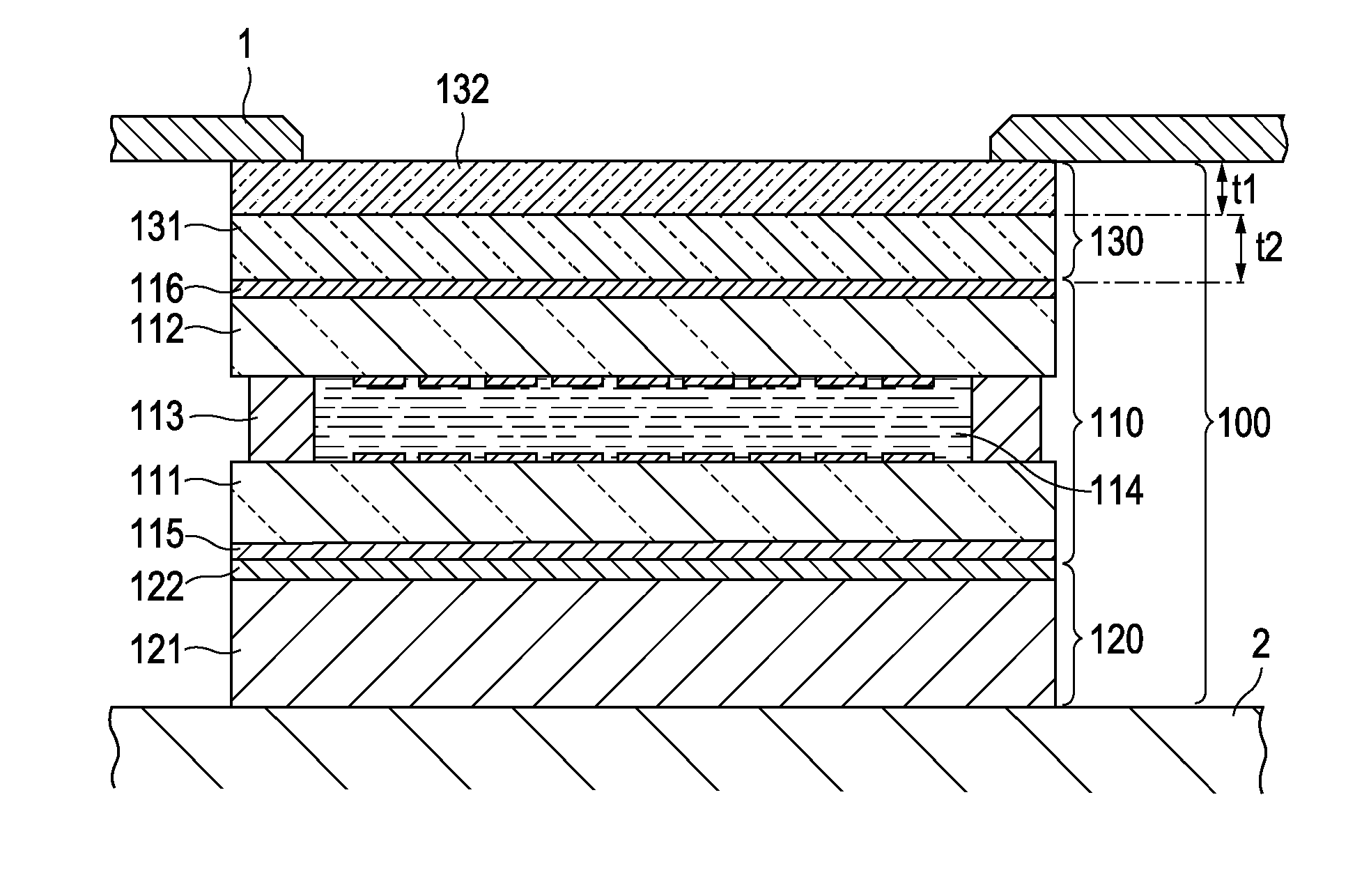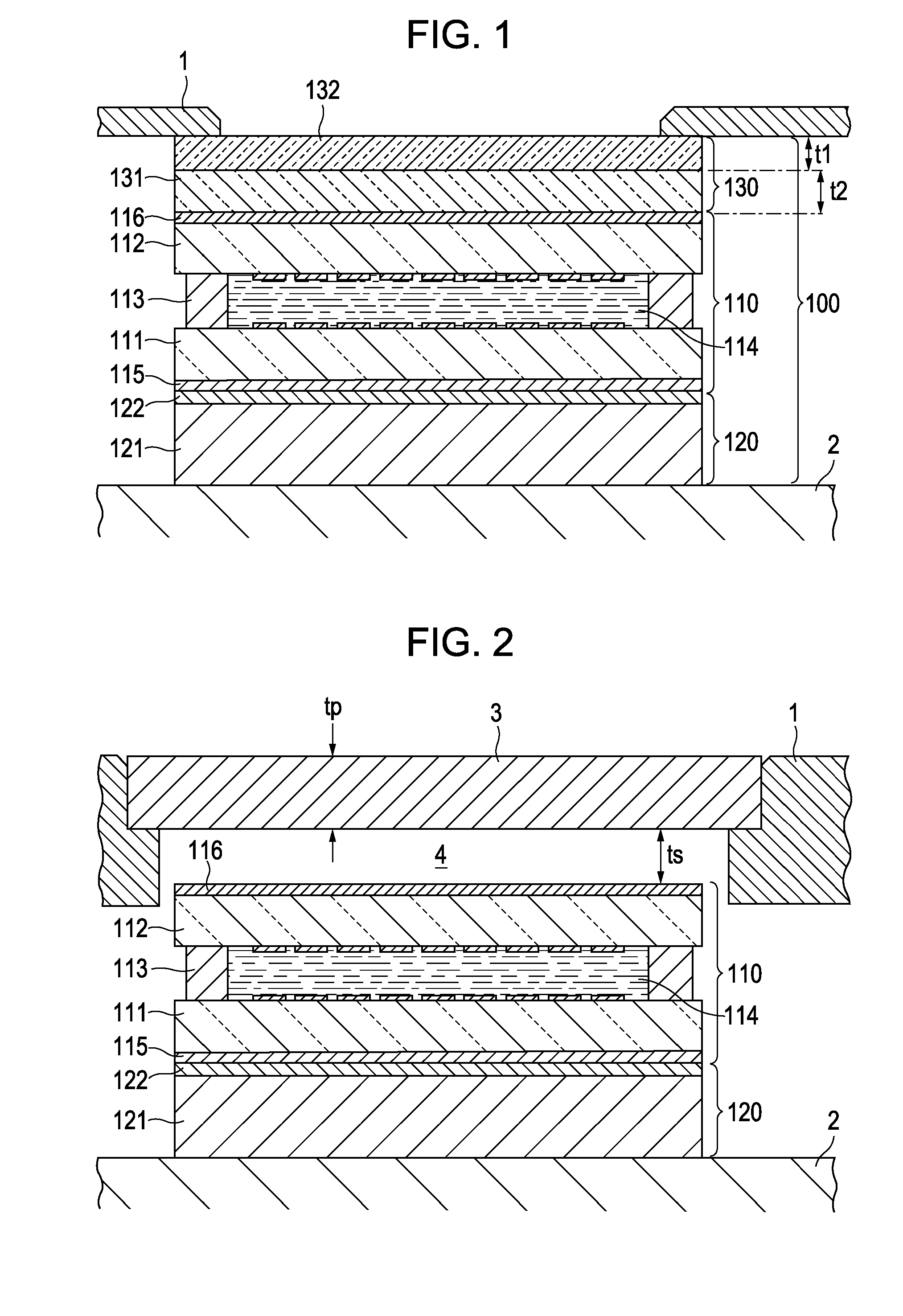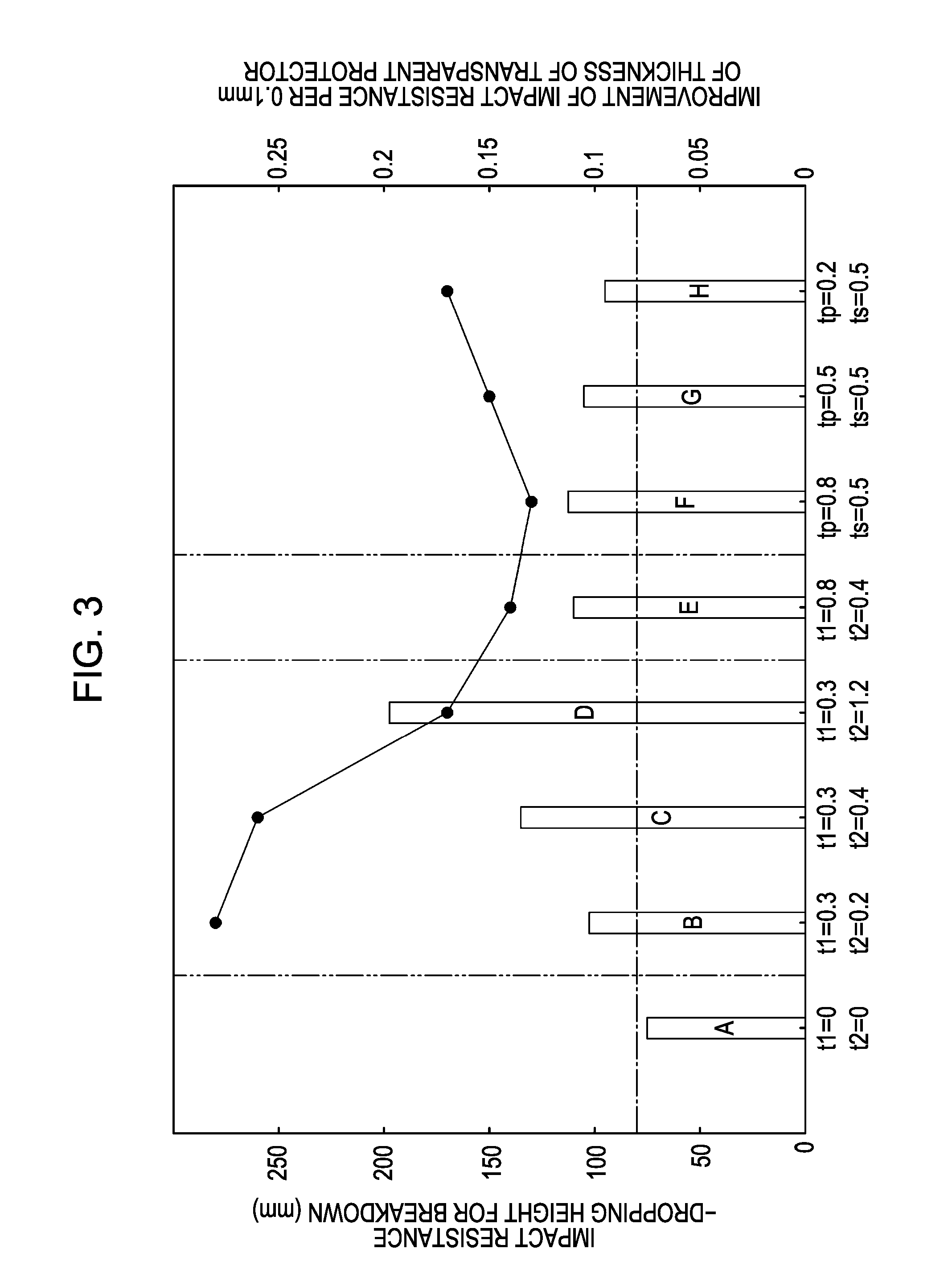Electro-optical module and electronic device
a technology of optical modules and electronic devices, applied in the direction of thin material processing, instruments, chemistry apparatus and processes, etc., can solve the problems of glass panel cracking, plastic panel deformation, display unit completely unrecoverable damage, etc., to improve impact resistance, improve dynamic elasticity value, and thin thickness
- Summary
- Abstract
- Description
- Claims
- Application Information
AI Technical Summary
Benefits of technology
Problems solved by technology
Method used
Image
Examples
Embodiment Construction
[0039] Hereinafter, embodiments of the invention will be described in detail with reference to the accompanying drawings. Firstly, an entire construction according to an embodiment of the invention will be described by exemplifying one of known constructions as a comparison example. FIG. 1 is a cross-sectional view schematically illustrating an electro-optical module according to an embodiment of the invention, which is installed in a chassis frame of an electronic device. FIG. 2 is a cross-sectional view schematically illustrating a state-of-the-art electro-optical module installed in a chassis frame of an electronic device as a comparison example.
[0040] Referring to FIG. 2 which shows a comparison example, an electro-optical module including a liquid crystal display panel 110 used as an electro-optical panel and an illumination unit 120 (such as a back-light unit) disposed at the rear of the liquid crystal display panel 110 is fixed on a board 2 installed in a chassis frame 1 of ...
PUM
| Property | Measurement | Unit |
|---|---|---|
| frequency | aaaaa | aaaaa |
| thickness | aaaaa | aaaaa |
| thickness | aaaaa | aaaaa |
Abstract
Description
Claims
Application Information
 Login to View More
Login to View More - R&D
- Intellectual Property
- Life Sciences
- Materials
- Tech Scout
- Unparalleled Data Quality
- Higher Quality Content
- 60% Fewer Hallucinations
Browse by: Latest US Patents, China's latest patents, Technical Efficacy Thesaurus, Application Domain, Technology Topic, Popular Technical Reports.
© 2025 PatSnap. All rights reserved.Legal|Privacy policy|Modern Slavery Act Transparency Statement|Sitemap|About US| Contact US: help@patsnap.com



